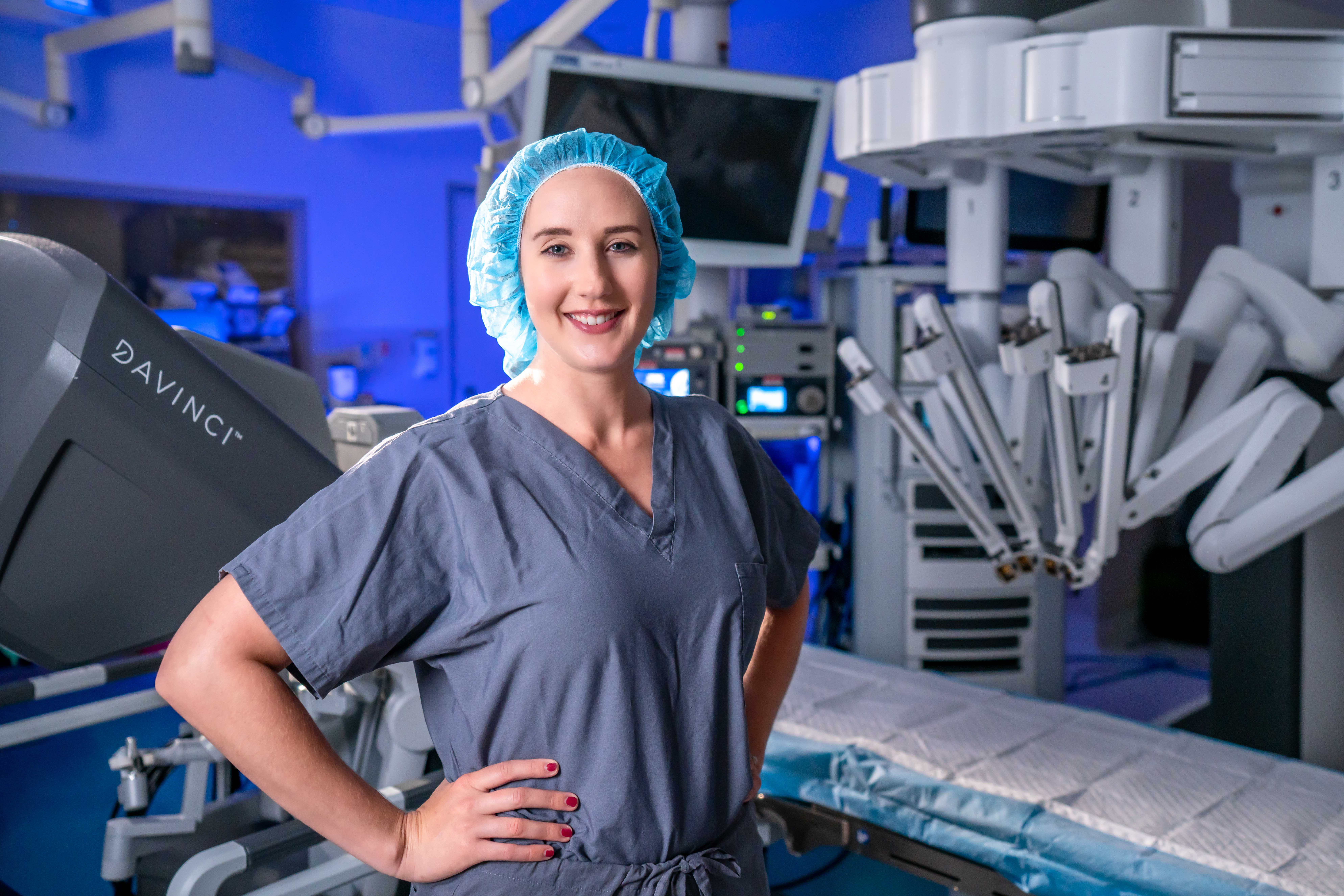
Eden Yelverton, MD, is an OB/GYN and has been a part of the Lakewood Ranch family for over a year. She specializes in delivering comfort and compassionate care through all stages of a woman’s life and believes in guiding her patients to help them make informed decisions about their health. This includes deciding whether surgery may be the best next step in their treatment.
What Is Robotic Gynecologic Surgery?
In general, robotic surgery uses a less-invasive method and allows surgeons to perform a wide array of procedures. Surgeons at Lakewood Ranch Medical Center perform these robotic surgeries using the da Vinci Xi® surgical system.
Gynecologic procedures, such as removal of the uterus (hysterectomy), removal of ovarian cysts, removal of fibroids (myomectomy) or removal of endometriosis, can be performed with the da Vinci Xi surgical system. “The most common reasons for gynecological procedures are typically abnormal menses with heavy bleeding or pain, or general pelvic pain,” says Dr. Yelverton.
Although she is a strong proponent for exploring other treatment methods first, there is a time and a place when surgery may be necessary. “Typically, I recommend a patient try medical management before surgery, since that’s often a sufficient treatment,” Dr. Yelverton says. “From there, we can evaluate the next steps.”
For patients seeking relief from relentless symptoms like heavy or painful periods, pelvic pain unrelated to periods, painful intercourse or pelvic pressure, robotic surgery could be an option.
The Recovery Process
Since robotic surgery is minimally invasive, it can often yield quicker recovery times than traditional surgery. This is possible due to reduced blood loss and smaller or fewer incisions.
“Most patients go home two to three hours after robotic surgery. The surgery itself can take anywhere from an hour and a half to four hours depending on the complexity of the procedure,” she says. “For hysterectomy, it can take up to six weeks to feel completely normal again, but some women recover more quickly and are running errands much sooner. Post-op recovery is different for everyone, but I never recommend rushing the healing process. It’s important to take the time that your body needs to heal.”
Other benefits of robotic surgery can include shorter hospitalization and less pain or discomfort after an operation with overall quicker recovery.
Your Healthcare Is Your Journey
“The decision for surgery is always a shared decision,” Dr. Yelverton says. “I guide my patients with the information I have so that they can make the best decision for themselves. Everyone’s journey is different and I’m here to walk with them through it, if it involves surgery or not.”
Whether a person decides to undergo gynecological surgery is ultimately their choice, influenced by a number of factors. Dr. Yelverton believes in taking it slow when it comes to treatment. “Surgery is not the solution for every situation, but my job is to help women understand what their options are for their symptoms and help them through the next steps, whether it is surgery or medicine,” she adds.
Speak to your doctor if you have any questions about robotic gynecologic surgery or other paths of treatment.
